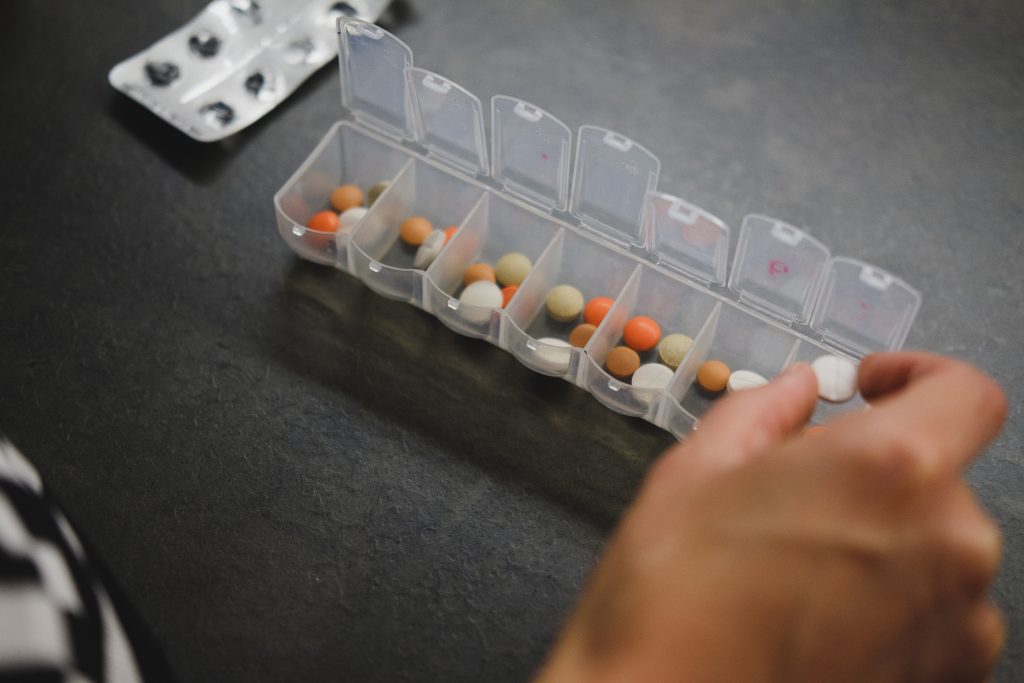During the last few months, I’ve had the privilege to interview several leaders within the Swedish healthcare system [1]. I asked what they expect will be the biggest technological and structural changes within healthcare over the next ten years. Their stories were surprisingly similar, but frightening in their conviction that healthcare is indeed facing significant structural and technological challenges. This article provides a snapshot of these interviews to shed some light on what healthcare professionals, vendors and providers should prepare for.
Artificial intelligence
Not surprisingly, artificial intelligence (AI) is expected to have a multi-level impact within healthcare. Until now, most discussions have speculated about how AI can be used, including research and pilot studies. What we are seeing now is a vast number of projects aimed at incorporating AI into clinical care.
Most of the interviewees agree that it is important to set the right expectations: AI will assist physicians, not replace them—in a similar way to how car manufacturers now promote assisted-driving rather than self-driving cars. The following are some examples of how AI is expected to change healthcare:
- AI will empower primary and ambulatory care, enabling them to handle more advanced tasks. This will be achieved by providing access to specialist knowledge and capabilities previously only found in specialist care.
- AI will improve diagnostics overall, in particular for medical imaging such as radiology and pathology, by automating tedious tasks such as performing measurements or counting cells, but also by assisting with the prioritization of cases or secondary reads through tumor detection. Such AI assistance will speed up and improve the precision and quality of diagnosis, and adoption has already started at several Swedish radiology and pathology departments.
- Administration and workflow optimization are other areas where AI will increase efficiency—for example, to help forecast department workloads in order to optimize staffing and equipment utilization. The operational benefits of AI are often neglected, but represent a field where productivity is much needed.
- AI will enable continuous training of health professionals, primarily by creating feedback loops where, for example, a radiologist will be notified about outcomes from pathology and surgery and be able to follow up and learn from previous cases.
- Physicians will also gain access to real-time, evidence-based science by searching among previous symptoms–treatment–outcome relationships. Healthcare could make use of not only the latest clinical trials, but also local and regional data about similar patients and their real-world health outcomes over time.
- Preventive healthcare is another area where AI will be applied, primarily driven by a need to reduce healthcare spending. For example, there are ongoing initiatives where AI-based models are being used to estimate the risk of readmission and to perform risk estimations for stroke. AI applied to wearable technology data will be able to predict some diseases before they occur.
- AI will also allow for a more granular clustering of patients to enable personalized treatment and care. One interviewee mentioned a Swedish study [2] that evaluated the ability to use AI-assisted clustering to identify sub-groups of patients with diabetes. The study identified five replicable clusters of patients with diabetes, each of which had significantly different patient characteristics and risks of diabetic complications. For example, one cluster had a significantly higher risk of developing diabetic kidney disease. In this way, data could be used to guide physicians in classifying patients and optimizing their treatment.
The list of AI’s potential effects on healthcare is long. However, there are several challenges that need to be solved during the adoption phase, ranging from ethical issues and access to training data to establishing medical guidelines for using AI. Most agree that these challenges must be solved not by healthcare alone, but by establishing new partnerships and ways of working between the industry, healthcare and research.

The shift from hospital care to home care
With populations living longer and treatments becoming better, we are seeing a growing group of elderly, chronically ill patients who require continuous monitoring and extensive care. Today, 80–85% of healthcare spending in Sweden goes to chronically ill patients [3]. Managing these patients as a part of specialist care is not economically sustainable, which is leading to a shift whereby primary care will serve this group instead. More diagnostics and treatment will be performed by ambulatory centers closer to the patients, but also by the patients themselves at home. As a result of primary care taking on a larger role in healthcare, specialist care will be able to focus more on difficult cases.
Patients with chronic conditions will be monitored from their homes using approved medical devices, such as glucose monitors, heart rate sensors, etc. One likely scenario is that home devices will feed data to separate home care platforms working like a “control central”, which will watch out for deviations. Only when a deviation is detected will the health provider become involved.
According to many of the experts interviewed, the shift towards home care and empowered primary care is one of the biggest structural changes we will see during the coming years.
Sub-specialization and disease centers
Just as primary care will handle a larger portion of advanced cases, we have started to see a concurrent centralization of highly advanced and specialized care. This consolidation will result in a few national centers of excellence for specific diseases, serving patients from the entire country. These centers will be able to attain higher patient volumes, fueling economies of scale and leading to better patient outcomes.
Specialist care will be conducted more in vertically integrated patient pathways rather than managed in separated departments. For example, a breast cancer center will bring radiologists, pathologists, oncologists, etc. who are all experts in the specific disease into the same organization. This will place new demands on IT systems that can work across department borders, supporting the exchange of medical images and information between specialist IT systems.

Genomics and personalized medicine
The days of trial and error in medicine will soon be gone and personalized medicine is becoming more common in healthcare.
Analyzing the genome is at the heart of personalized medicine and offers many potential areas of application:
- By sequencing the DNA of a tumor in cancer care, the right treatment can be selected from the start. This will optimize the chances of survival for the patient and minimize side-effects. Gene sequencing is likely to be performed for most cancers within the next decade. Some hospitals have already announced that they will sequence all cancers before 2025.
- Immunotherapy is an area where we are currently seeing significant progress. Treatments such as PD-L1 inhibitors are only given to patients where a cancer tissue sample responds positively to a test analyzed by the pathologist. A positive response means the patient has a high chance of responding well to the treatment; if not, the patient is most likely better off being treated with standard care, such as chemotherapy. Immunotherapy tests are becoming more complex (and precise) and within the next decade, cancer diagnostics will involve multiple types of tests, including tissue biomarkers and genomic tests to find the best possible treatment.
- Genomic testing will also be used for predicting “non-response” or severe side-effects to treatment. By analyzing the genome, these patients can be identified from the start and alternative medications can be selected. One example is Escitalopram, a selective serotonin reuptake inhibitor (SSRI) used to treat depression. Some patients do not respond well to the drug, while others develop adverse reactions requiring discontinuation of treatment. A study [4] showed that 30% of the patients carried gene variants causing excessive or inadequate enzyme levels, which led to a switch of drugs within one year.
- Individual treatments are now a reality, marked by the first use of ultra-personalized medicine to provide a girl with a genetic neurological disorder with a treatment specifically created for her [5]. However, the development of the treatment was only possible due to a crowdfunding campaign.
- Genomics will play a significant role in screening for inheritable disease risk. For example, we know that mutated BRCA genes elevate the risk for breast cancer from approximately 12% in a woman’s lifetime to 55–65% before the age of 70 [6]. Another example is the presence of the APOE4 gene, which is associated with a higher risk of developing Alzheimer’s disease.
- Liquid biopsy is another technology that will be used more extensively. By analyzing a blood test, cancer DNA or tumor cells can be detected, the risk for metastatic relapse can be estimated and the treatment response can be monitored without a tissue biopsy.
- Curative therapies are time-limited treatments that cure patients instead of the patient needing to take a pill for the rest of his/her life. The number of curative treatments is increasing (currently 5% in clinical trials [7]), driven by progress in gene therapy, genetically re-engineered cells (such as CAR-T and stem cell treatments) and biologically modifying drugs (such as Sovaldi for Hepatitis C). Curative treatments have the potential to completely reshape the landscape for care givers, pharma companies and payers, especially by lowering the overall cost for a particular disease. However, they also introduce pricing models as they eliminate the need for long-term chronic care. (At the time of writing, Karolinska University Hospital got the first approval in Sweden to use CAR-T treatment for leukemia [8].)
Although genomic testing will change the fundamentals of medicine significantly, it will require structural changes to make it practically feasible in routine medicine. Genomic sequencing is currently very time consuming, and the analysis is not yet streamlined and lacks an efficient clinical workflow. IT systems and equipment need to be “industrialized” to support processes for much higher volumes and complexity. Another issue is the large amounts of data being produced, where a full genomic sequencing can range from 60–80 GB. Today, most providers would rather save the tissue or blood test instead of the data itself.

Self-care and patient engagement
Patients will become more engaged in their own care, placing higher demands on provider services and the way they interact with patients. Patients are becoming more demanding and searching for the best possible care, which is leading to second opinions becoming more common. Patient portals will thus become a standard means of providing access to medical records, test results and images.
The consumerization of healthcare will lead to a higher degree of self-diagnosis by performing tests at home or at the pharmacy. One example is the Swedish telecommunications services provider Telia, which now offers a home test for inflammatory bowel disease (IBD). The patient receives a test in the mail and answers a questionnaire in an app, which is analyzed by the care provider to determine whether further investigation is necessary [9]. New regulations around these tests have recently (October 2019) been incorporated by the Swedish Medical Products Agency (Läkemedelsverket) to guarantee test quality and safety [10].
Self-testing will not only increase patient engagement, but also speed up “care loops” by replacing many provider-dependent, invasive tests. This will result in fewer repeat visits and faster turnaround times between the patient’s first contact, diagnosis and treatment.
Patient-generated data entering clinical care
Wearables with health-related monitoring capabilities are common and already generating data that could be valuable for physicians in terms of prediction, diagnosis and monitoring of diseases. This could create a major opportunity for healthcare if used correctly, especially in predictive care and disease monitoring. Unfortunately, there are a few challenges that need to be solved before healthcare can make use of wearable data. For example, we lack medical guidelines for how to make use of, store or receive this data. In addition, there must be ways to quality-assure the data: “How can your physician ensure you haven’t put your Apple Watch on your dog’s tail?”
Detection of false positives is another issue. One example is the Apple Watch study [11] showing a high number of false positives for atrial fibrillation when analyzing wrist-measured ECGs. Only 34% of people who received alarm notifications were confirmed to have true atrial fibrillation. Such a high degree of false positives would increase workloads for an already highly strained sector and demonstrates the need for new, carefully designed processes and guidelines. Having that said, we are already seeing medically certified wearables being introduced for chronically ill patients, such as continuous glucose monitors.

Digitization of care processes
While the implementation of electronic medical records (EMRs) digitized a previously paper-based workflow, the work processes in many cases were not changed to optimally benefit from said digitization. As the next-generation EMRs are implemented in most Swedish regions over the years to come, clinical care processes will need to become “truly” digital.
According to several of the interviewees, the incorporation of digital workflows and processes will be one of the biggest challenges in the coming years. Digital strategies and data must support and assist clinicians’ daily work, rather than adding an extra burden of administration. These same principles must eventually apply to patients.
If done well, Sweden has enormous potential to make use of the data in the nation’s quality registry for routine medicine. This registry of real-world evidence has previously enabled Swedish researchers to innovate breakthrough products, such as catheters, growth hormones and the pacemaker.
Increased IT knowledge in healthcare
AI, big data and statistics are becoming a pivotal part of predictive and data-driven healthcare workflows, which is creating new demands in terms of having access to the right knowledge, skills and staff. Today, most healthcare providers lack the right resources to implement and maintain such systems. In addition to the ongoing digitization and growing need to introduce new technologies, the ongoing EMR replacements in Sweden are taking up most of the bandwidth of current hospital IT staff, leaving little room for other projects.
The increased demand for new skillsets in healthcare will require a tighter collaboration with IT vendors, the pharmacy companies designing precision medicine tests, and researchers. These partnerships will be mutually beneficial, since the industry is heavily dependent on access to large amounts of anonymized patient data for algorithm development while healthcare is dependent on the industry’s knowledge and resources in statistics, AI and IT.
There is a possible future scenario where we could see healthcare outsource these skillsets. The need for new skillsets could be the trigger to eventually adopt cloud-based IT systems at a lower cost and let healthcare focus on its core business. For example, the NHS in the UK has announced that public clouds are safe to use for patient data [12], and the Norwegian government is pushing for cloud technology to be widely adopted in public administration [13].
The essentials—healthcare ten years from now
All of the interviewees paint a similar picture of the next ten years in healthcare as a time of significant structural changes and technological shifts. Medicine will become more personalized, especially in cancer care, which will require new investments in incorporating genomics into workflows, supported by new IT systems and staff. The introduction of AI will impact many different levels and enable primary care to become more advanced and also manage the growing number of chronically ill patients at home. Patients will be more engaged in their care and providers will need to meet higher demands on service, make healthcare more user friendly, and offer new ways of interacting. A prerequisite for achieving data-driven healthcare is that care processes must become digital.
Overall, the next ten years will be characterized by true digitization and personalization, which will require a much faster rate of adoption of new technology and significant structural changes in the way care is provided. Successful partnerships between healthcare providers, IT vendors and researchers will ensure that patients will benefit from the many technological and medical advancements available.
References
- The people interviewed included hospital management, managers at healthcare tech companies, politicians, experienced industry consultants and participants in major, ongoing Swedish EMR projects. The interviewees are kept anonymous in this article.
- https://www.thelancet.com/journals/landia/article/PIIS2213-8587(18)30051-2/fulltext
- https://www.dagensmedicin.se/artiklar/2018/06/14/sjukvardens-glomda-resurs-kan-vara-vard-atskilliga-miljarder/
- https://www.sciencedaily.com/releases/2018/01/180112105113.htm
- https://www.lifesciencesweden.se/article/view/681314/forsta_lakemedlet_for_bara_en_patient
- https://www.nationalbreastcancer.org/what-is-brca
- Clinicaltrials.gov (October 2019)
- https://www.karolinska.se/om-oss/centrala-nyheter/2019/10/karolinska-forst-i-sverige-med-att-certifieras-for-car-t-cellbehandling-till-patienter-med-akut-lymfatisk-b-cellsleukemi/
- https://www.telia.se/foretag/losningar/homecare/ibd-home
- https://lakemedelsverket.se/Alla-nyheter/NYHETER-2019/Sjalvtester-maste-vara-CE-markta/
- https://www.biospace.com/article/apple-watch-atrial-fibrillation-study-has-positive-but-mixed-results/
- https://digital.nhs.uk/data-and-information/looking-after-information/data-security-and-information-governance/nhs-and-social-care-data-off-shoring-and-the-use-of-public-cloud-services/nhs-and-social-care-data-off-shoring-and-the-use-of-public-cloud-services-guidance
- https://www.basefarm.com/en/the-norwegian-government-pushes-for-further-cloud-computing

